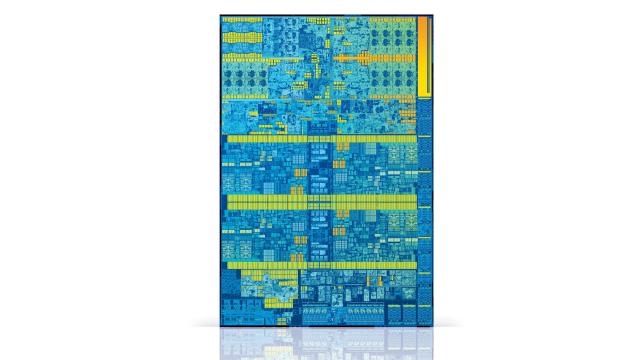Stop. Don’t buy that new Windows laptop or tablet. Don’t pull the trigger unless you’re getting a truly amazing deal. Because today, Intel’s launching its latest processor — Skylake — and you’re may want one in your next PC.
Why? Let me count the reasons. And afterwards, I’ll help you understand how to tell a Skylake chip apart from its similar sounding neighbours.
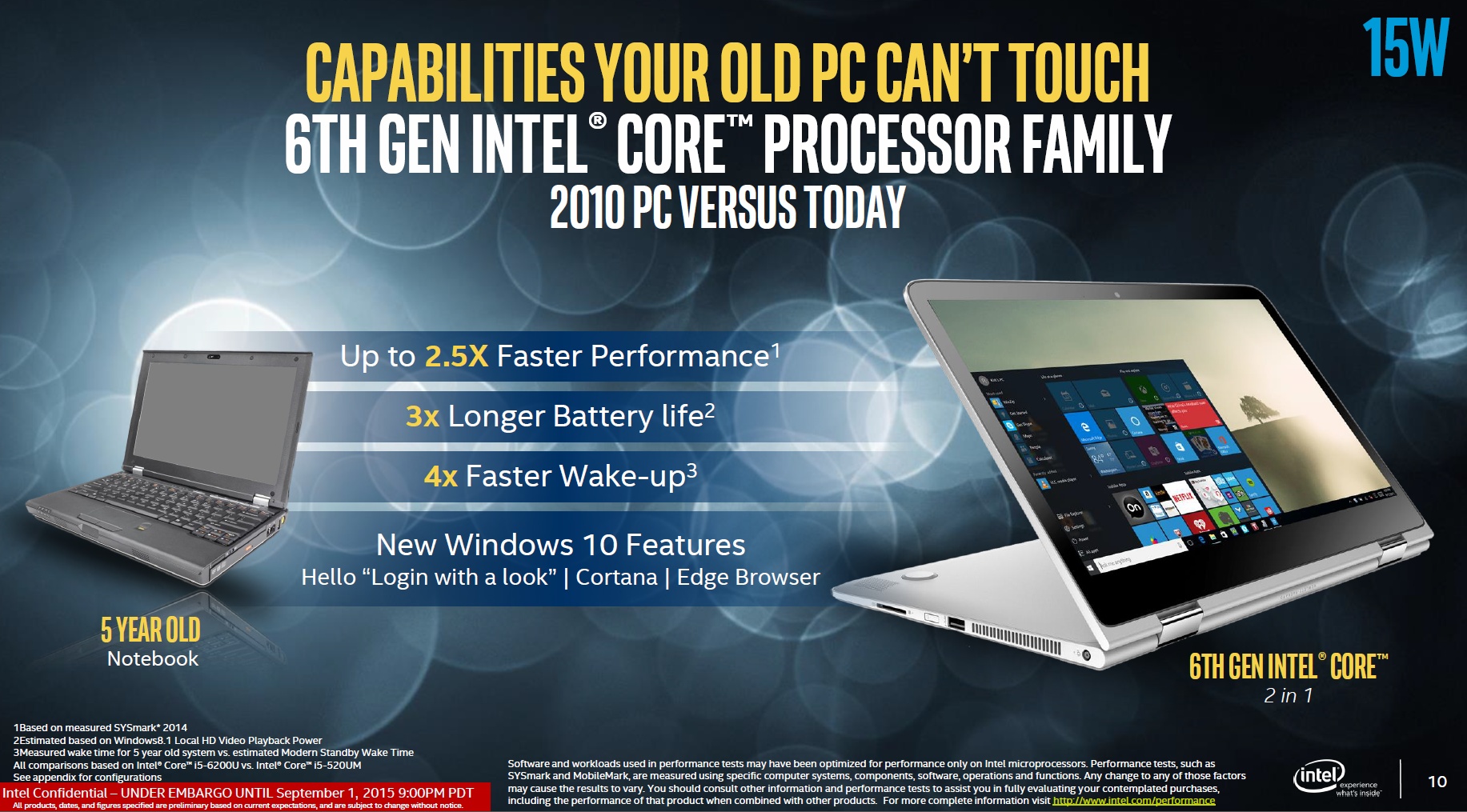
Free performance and battery life boosts
Every year, Intel makes their latest chips sound amazing — by comparing them against ageing computers that should probably be replaced! Does it impress you that a Skylake chip can give you 2.5x the raw performance, 30x the graphic and 3x the battery life of a five-year old laptop? Yeah, that’s what I thought.
But that doesn’t mean that Skylake isn’t a better pick period: Intel tells us that on average, you’ll see 10% better performance, 30% better graphics performance, and an extra hour of battery life (while playing 1080p video) compared to last year’s Broadwell chips.
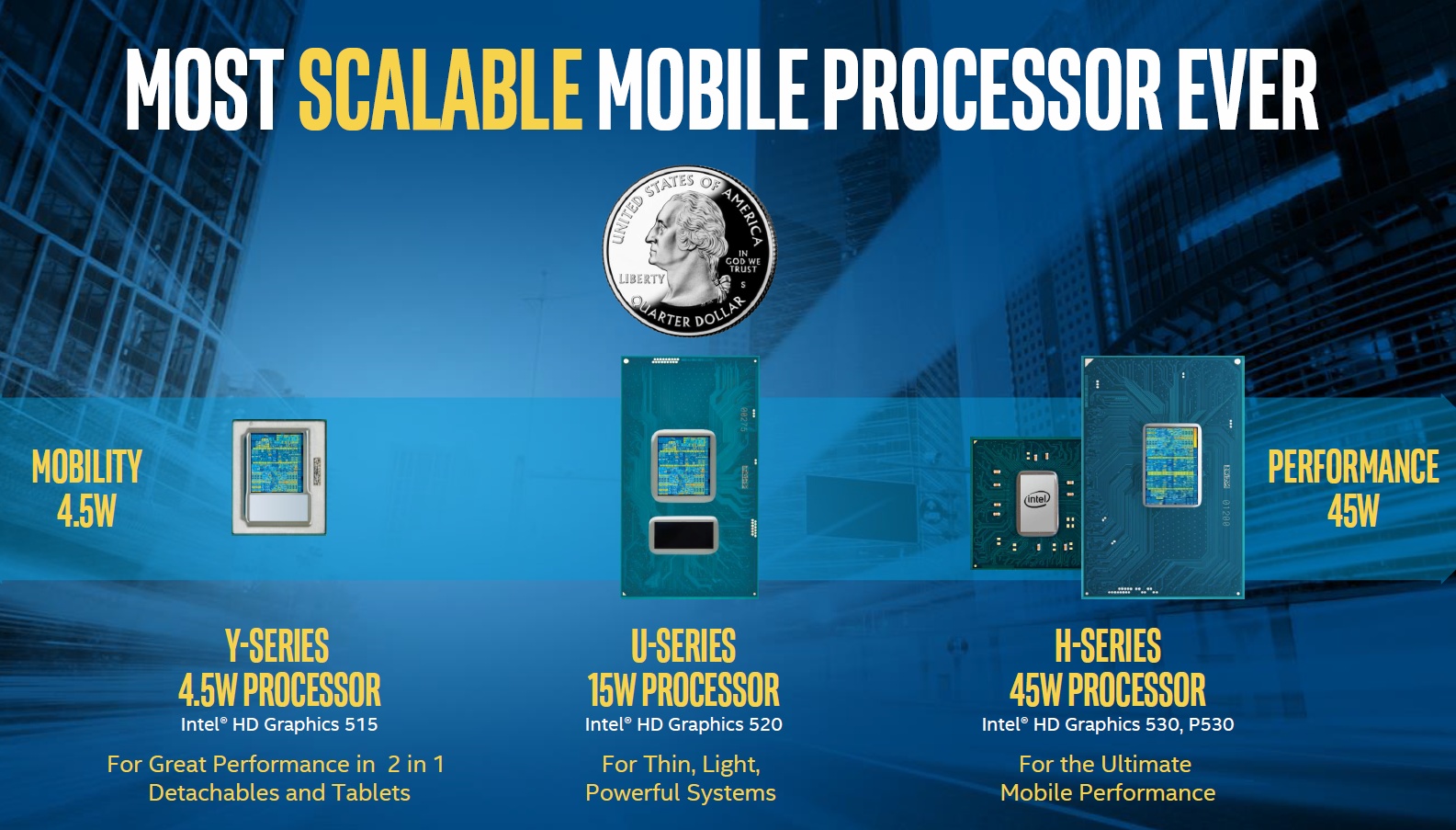
Ultrathin laptops, tablets, and PCs-on-a-stick that can actually handle 4K video
Last year, Intel processors powered some of the sucked. But where Intel’s new Skylake chips are making the biggest strides are in the same sorts of ultra-compact computers.
Intel claims its temperamental Core M now delivers 40% better graphics performance, and is particularly optimised for the next generation of streaming video. With built-in HEVC / H.265 and low-power AVC / H.264 decoders to do the heavy lifting of video streams, Intel says a Core M can consume less than 1W under load. They showed us a Core M system running four 4K videos at 30fps simultaneously while using only 20 per cent of the CPU.
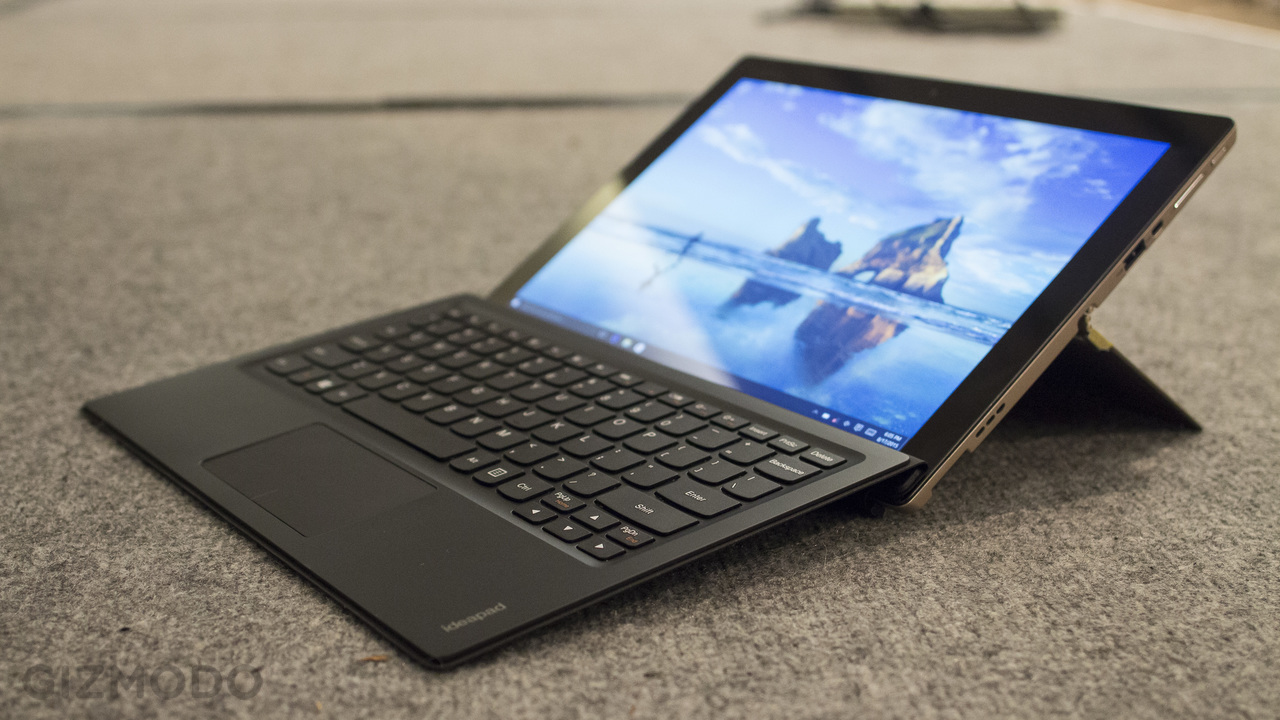
The Lenovo Miix 700, a convertible spotted at IDF 2015 with Core M and a 4k screen.
Which affects battery life, too: Intel claims a new Core M machine will be able to get 10 hours of 1080p video playback on a charge, as long as it’s got a (fairly reasonably sized) 38Wh battery.
Perhaps more importantly, the raw CPU performance should be a lot more stable as well. The reason Core M chips can seem so powerful — yet so power efficient — is because they normally run at a very low speed, then rapidly kick it into high gear (over 1GHz faster!) for very short periods. Up to now, the shifting hasn’t been so smooth, and the original Core M systems could stutter while waiting the 30ms it took for the “p-state” to change. With a new process called Speed Shift, it takes less than 1ms, so hopefully the stutter is gone.
And with new support for skin temperature sensors, those chips should be able to more intelligently keep those thin, fanless machines cool to the touch.
In fact, Intel has such high hopes for Core M now that it’s giving Core M its own family: there will now be Core M3, Core M5, and Core M7 processors, each with their own fancy logos.

Beefier laptops, too
If you’d rather have a more beastly laptop than an ultraportable one, Skylake has you covered there too. Intel’s server-class Xeon processor will now be available in laptop form, as will a K-series Core i7 processor designed for overclocking, and quad-core Core i5 mobile parts as well. That’s three firsts in a row. Plus, Intel’s high-end Iris integrated graphics — the ones that can actually play games at semi-reasonable settings — should be getting more powerful and also way more accessible. Of course, once we’re talking about more muscle in a laptop, you can probably expect the battery life to fall by the wayside.
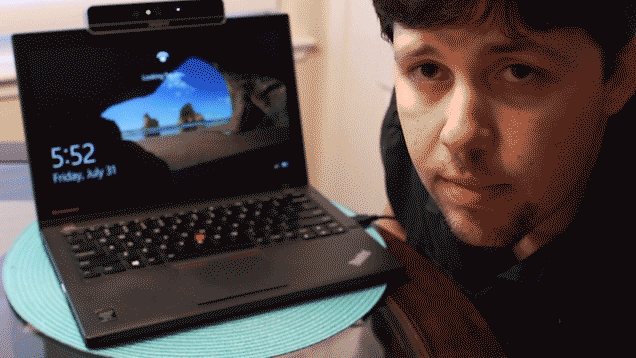
Fancy next-gen features
“We’re on a journey of no wires, no passwords, no user interfaces,” says Intel’s Kirk Skaugen. What does that mean? If you’re lucky — if laptop and tablet manufacturers find it profitable — it means your Skylake-powered computer will come with a host of delightful new technologies.
With a good microphone, you can literally just say “Cortana, wake up” to wake a Skylake-equipped Windows 10 laptop from sleep mode. If there’s an Intel RealSense camera built-in, you can log in with just a glance.
If your laptop has support for the super fast WiGig short-range wireless tech, you can walk right up to a WiGig-equipped monitor and instantly use it as a wireless display for your laptop. Or — far more likely — if your laptop has an Intel Thunderbolt 3 port, you may be able to charge the machine, drive two 4K monitors, boost the power of that laptop with an external graphics card, and connect several speedy USB devices all at the same time.
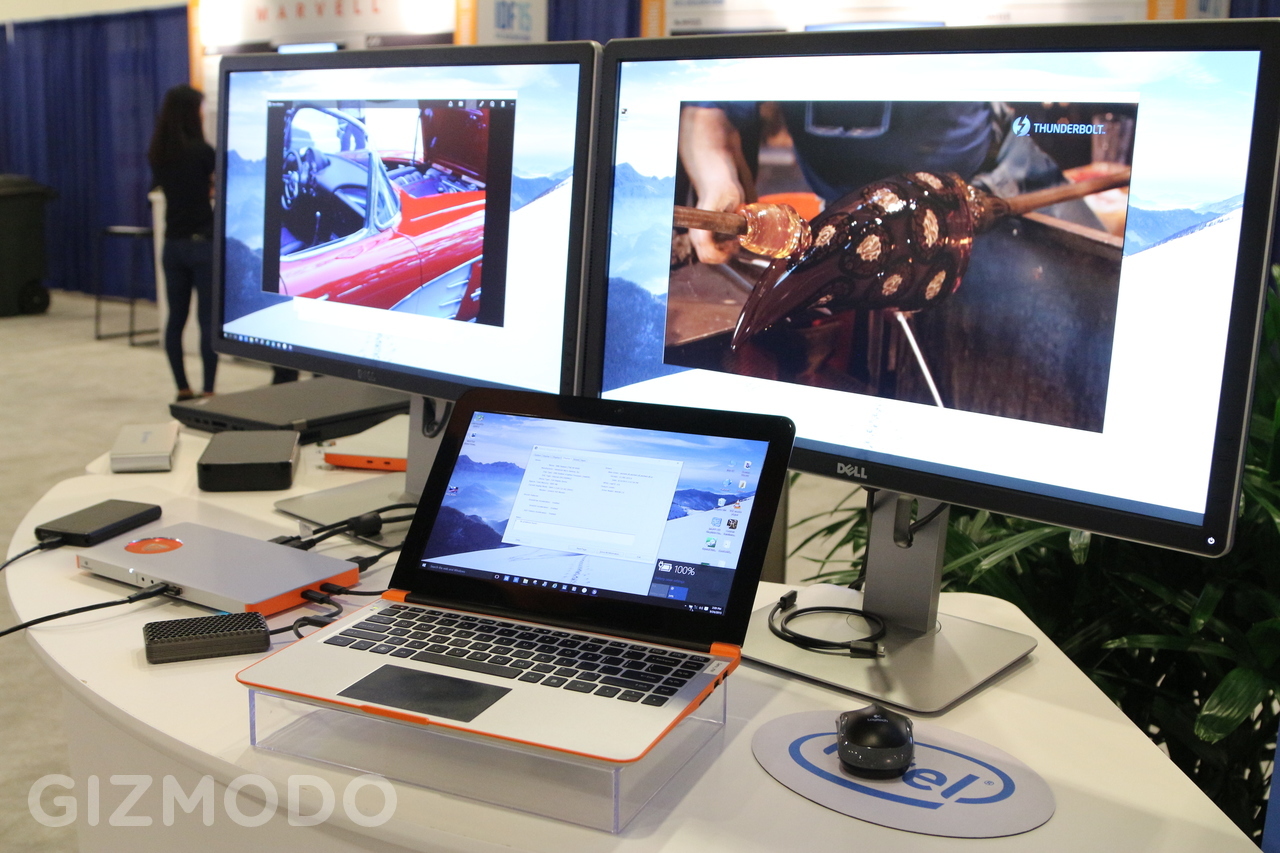
A prototype Thunderbolt 3 setup. One puny laptop can do all this thanks to a Thunderbolt dock.
Can you actually expect your next computer to have these particular features? It’s hard to say. There sure weren’t a lot of Intel RealSense or WiGig devices last year, and this year Intel says it’s only seeing around double the number of designs for each. However, Thunderbolt, which used to be an expensive product for pro users (like FireWire) may finally come into its own. “We’re bringing Thunderbolt into the mainstream, not just at the high end,” says Intel exec Navin Shenoy. Intel says it’s seeing five times as many Thunderbolt systems now.
Oh, one last feature you might be interested in: Intel says that tablets will be on sale this holiday with detachable keyboards that double as wireless charging docks.
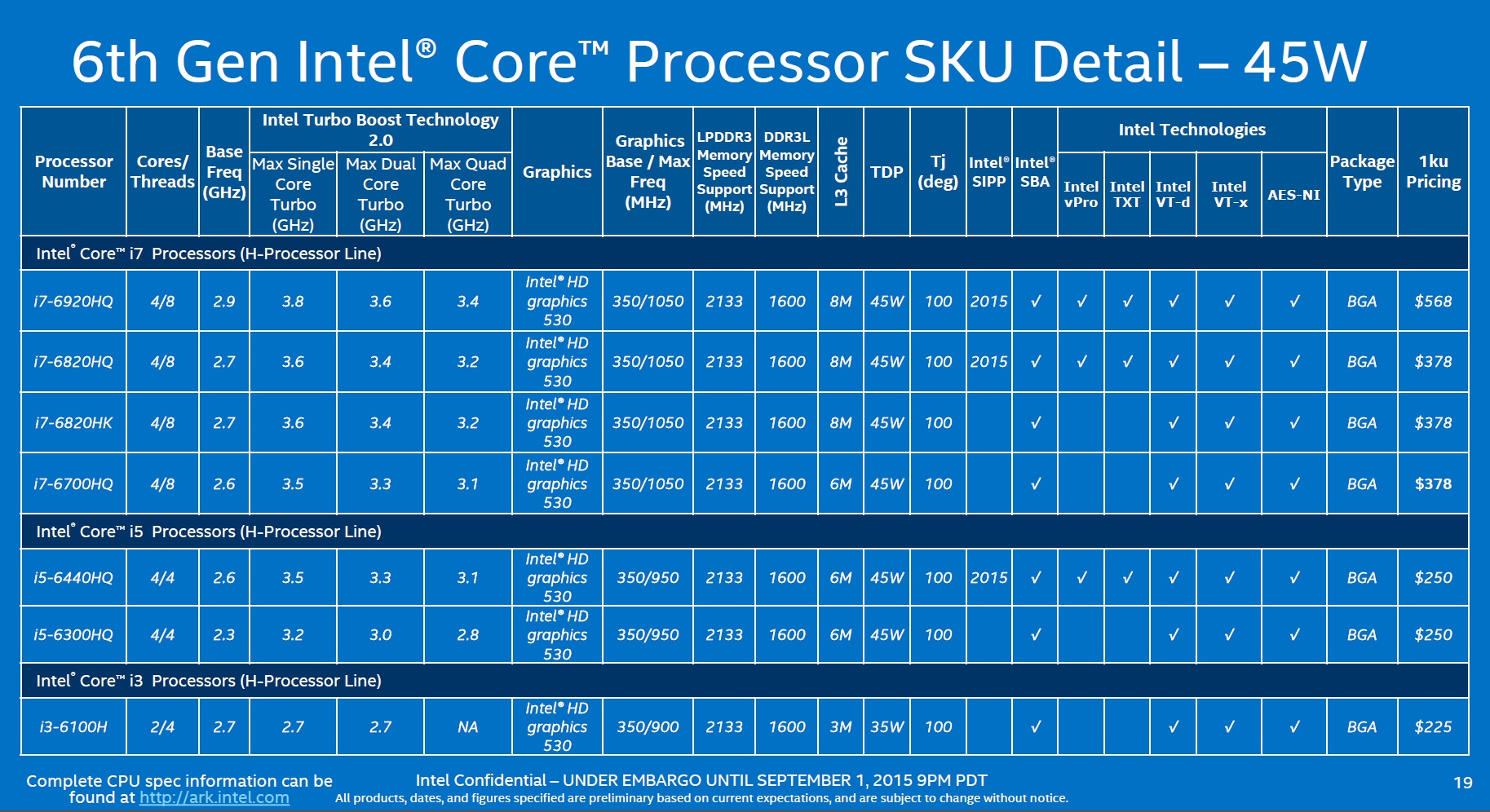
So how do I tell these processors apart?
As usual, the specifics of Intel’s Skylake processors are hidden behind a decoder ring’s worth of alphanumeric gibberish, but it’s not that hard to decode. If you want a Skylake processor, you just have to look for a Core i3, i5, or i7 that starts with the number 6. For example, the Core i7-6920HQ. The “6” in the first position means that it’s Skylake, where 5, 4, 3, and 2 have represented earlier generations of chip.
Here are what the other parts of the alphanumerics mean:
- H is for powerful 45W or 35W processors that probably won’t last very long on battery.
- Q stands for quad-core.
- U is generally for lighter weight 15W processors designed for thin machines with longer battery life.
- The second digit generally represents how high the chip is on the totem pole. A Core i5-6300U starts 100MHz faster than a Core i5-6200U, and also comes with vPro.
- If the third digit of a U-series processor is a 6 or a 5 (e.g. Core i5-6260U), it’s a slightly beefier 9.5W-15W processor with more powerful Iris graphics. And if the last digit is a 7 (e.g. Core i5-6287U) it’s an even beefier 28W processor with more powerful graphics still.
Don’t expect them all at once
While Intel is formally launching Skylake chips today, it will be a staggered rollout like usual. We’re hearing that it might take a month for the first ones to roll out. And while Intel says it expects to have plenty of Skylake systems on the market this holiday season, whole swaths will have to wait for 2016 — including the mobile Xeon, lower-end Pentium and Celeron chips, processors with vPro, and all of the new chips with Iris and Iris Pro graphics.
So for now, I guess you might still be ok buying a laptop with an older processor. But be smart about it, yes? PC manufacturers are going to be pushing to sell off computers with the old chips, and you should be able to find some truly excellent sales.
